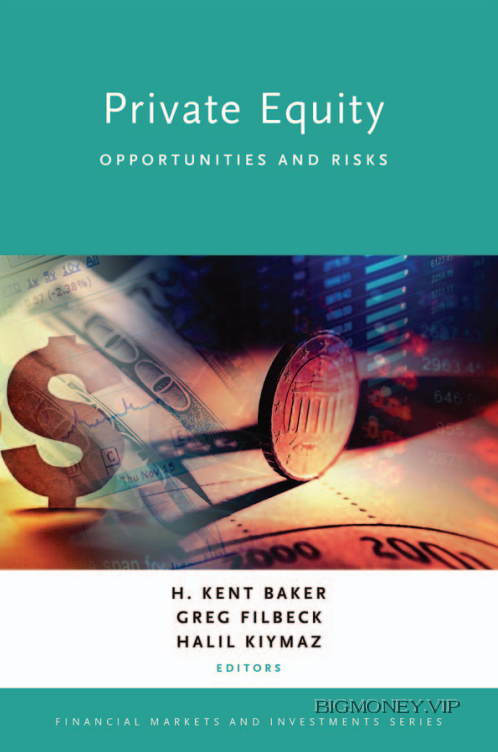Private Equity OPPORTUNITIES AND RISKS by H. Kent Baker, Greg Filbeck and Halil Kiymaz

Part One Introduction
1
Private Equity
An Overview
H. KENT BAKER
University Professor of Finance, Kogod School of Business, American University
GREG FILBECK
Samuel P. Black III Professor of Finance and Risk Management, Penn State Erie, the Behrend College
HALIL KIYMAZ
Bank of America Professor of Finance, Crummer Graduate School of Business, Rollins College
Introduction
Warren Buffet, the Oracle of Omaha, has never hidden his disdain for the private equity
(PE) crowd (Lenzner 2012). Buffett told Time magazine that “I don’t like what private
equity firms do in terms of taking every dime they can and leveraging (companies) up so
that they really aren’t equipped, in some cases, for the future” (Foroohar 2012). Buffet is
critical of PE for its lopsided compensation structure in which investors, called limited
partners (LPs), pay 2 percent of their principal each year to the manager or general part-
ner (GP) even if the person accomplishes nothing or loses a bundle plus an additional
20 percent of the LPs profit if the manager succeeds. He is also critical of the amount
of debt that the managers pile on investment companies. However, others do not share
Buffet’s scorn for PE. To appreciate why requires an understanding of the nature of PE.
What is PE? Private equity is an asset class consisting of equity securities and debt in
companies not quoted on a public exchange. Major types of PE include venture capital,
buyouts, mezzanine capital, and distressed (turnaround) investments. Venture capital refers
to equity investments made, typically in less mature companies, for the launch of a seed
or start-up company, early stage development, or expansion of a business. By contrast, a
buyout involves investments in mature companies that require financing to pursue growth
opportunities. A buyout involves a group of investors acquiring a target company from its
current owners with the help of equity finance from a PE provider and debt finance from
financial institutions. Mezzanine capital refers to subordinated debt or preferred equity se-
curities that often represent the most junior portion of a company’s capital structure that
is senior to the company’s common equity. Distressed investments refer to investments in
equity or debt securities of financially stressed companies (Cumming 2010, 2012).
Private Equity OPPORTUNITIES AND RISKS by H. Kent Baker, Greg Filbeck and Halil Kiymaz




